Campfire Orbit – Stellar Warm Bluetooth IEMs
Campfire Orbit is a $249 USD pair of Bluetooth IEMs or In-Ear Monitors with aptX and aptX HD, 10mm dynamic drivers, and with Dual Microphones. Today we will review it and compare the orbit to other Bluetooth IEMs including Astell & Kern AK UW1000 MKII (299 USD), HIFIMAN Svanar Wireless (499 USD), and Grell TWS1 (199 USD)
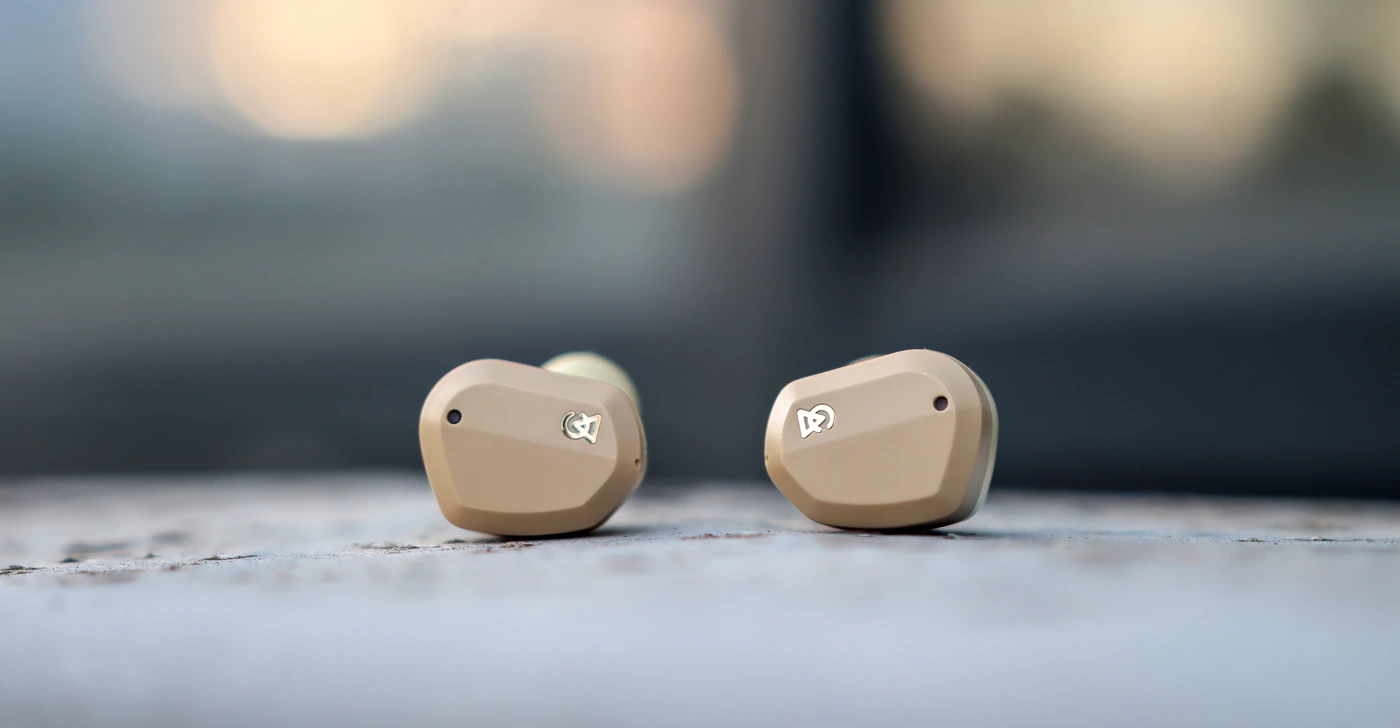
Introduction
Campfire always brings something fun to the table. From origami folded paper for their cases, all the way to some of the most brilliant transport cases, if you have style, they got you covered. Campfire products are generally widely available from Amazon and a few other specialist shops, but they also have an online shop which is worth checking out. As an Amazon Influencer, I earn from qualifying purchases, and using the purchase links in my reviews helps me maintain this website and Youtube Channel. Campfire has provided the sample for this review, in exchange for my honest opinion.
PROs – Warm, Bloomy, and Full Sound, Good details, Cohesive sound with a natural midrange, Comfortable fit, Good passive noise isolation, Long battery life, Beautiful design, Wide soundstage, aptX and aptX-HD codecs, Qi Wireless Charging.
Cons – A bit of sound leakage, Bassy sound can be a bit strong at loud volumes.
Product Link
You can grab one here – https://amzn.to/3WWmpCF
Build Quality/Aesthetics/Fit/Comfort
The new Orbit is a really beautiful looking IEM, with a Taupe color for both the transport case and the IEMs. As the company goes for color matching and beautiful designs, the tips are also in that light brown color, which gives the whole IEM a cohesive and beautiful design. Campfire designed a special slightly textured plastic for the transport case and the IEMS, and they feel premium instead of the traditional either glossy opr matte plastics we see with most entry-level TWS Bluetooth IEMs.
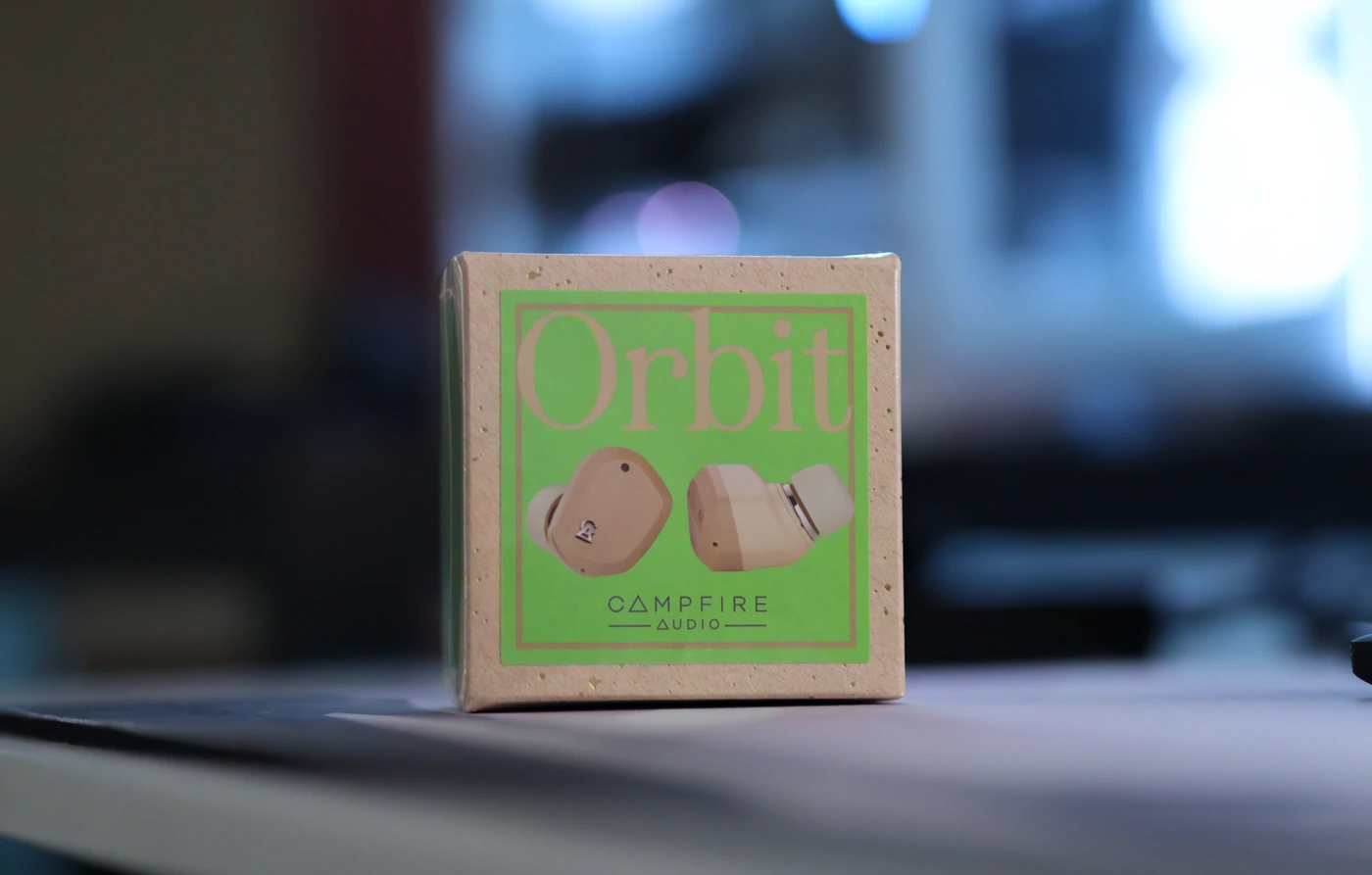
The battery does not sound big, and the IEMs have a 50mAh battery inside, while the case has a 270 mAh battery. This is enough to give you up to 8 hours of battery l;ife, and in my experience the Orbit survives up to 7 hours even at higher volumes and with high quality codecs. There are 30 hours of extra playback in the transport case, so around 3 and a half charges to keep the Orbit going through the week. Although there is no LDAC support, Orbit does come with aptX, aptX HD and SBC codecs, as well as AAC for iPhones. It takes around 2 and a half hours to fully charge the Orbit from zero to max.

The body of the IEMs is light, and the eartips are of a good quality. The case has both wired Type-C charging, but also wireless Qi charging. The drivers are 10mm dynamic drivers, with a LCP or Liquid Crystal Polymer Diaphragm. The spout of the IEMs are made of Stainless steel, and the connection is kept through a Bluetooth 5.2 with LE support protocol.
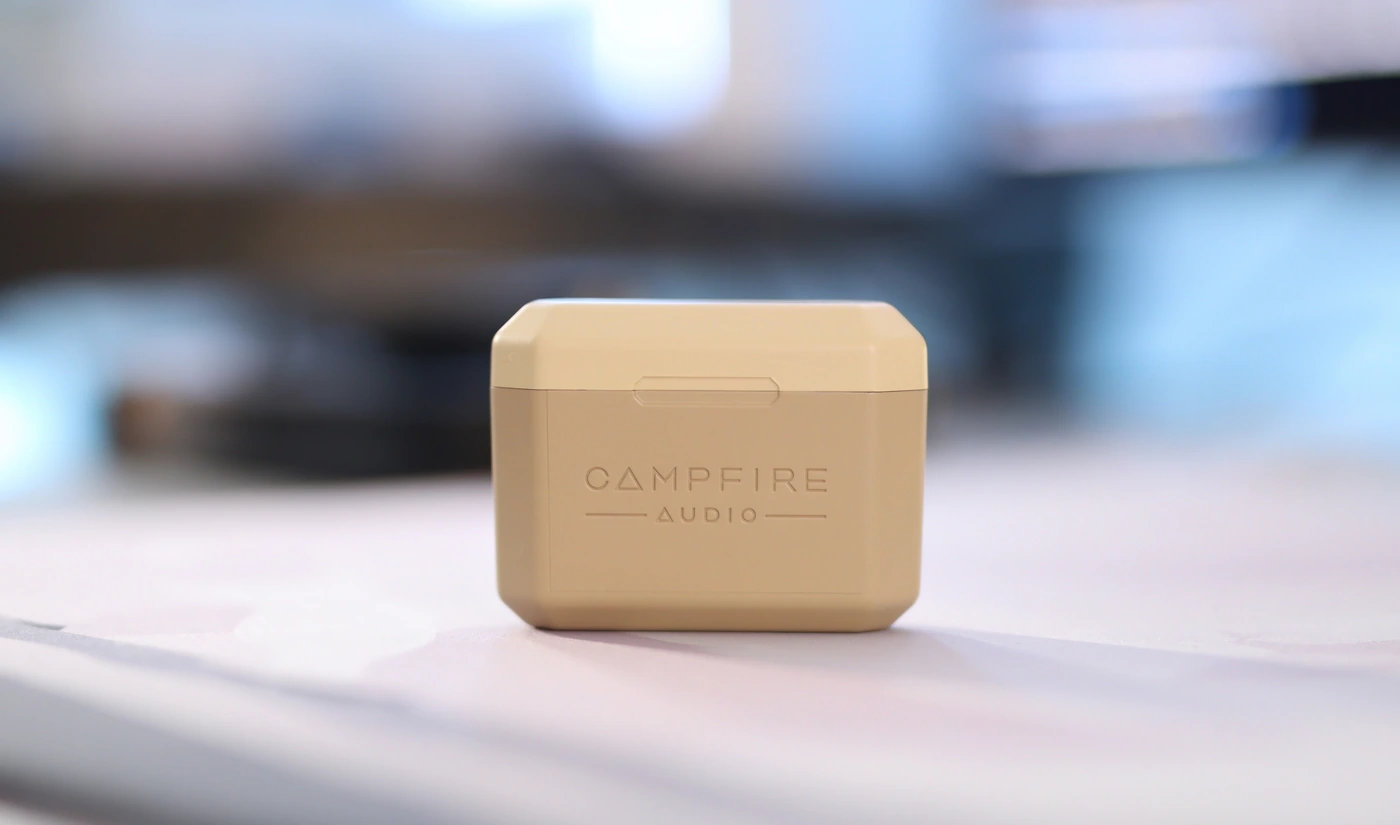
Subjectively, Orbit is fun and easy to wear, practical and has a strong connection quality. I managed to not have a single dropout on the wireless connection while using them at the Gym, although I typically don’t leave my phone farther than 2 meters away from me. The passive noise isolation is quite good, and although there is no Active Noise Canceling or ANC, Orbit at medium volumes cancels everything happening in the room. There is a bit of sound leakage, and in a completely silent room, someone might know you’re listening to music, although it is not possible to understand what’s being played from the outside and it is far below what I would consider annoying or even distracting.

As TWS and True Wireless Bluetooth IEMS are basically made for Gym and most used at the Gym it is good to mention the IPX5 Water Resistance, although I wouldn’t use the Orbit or any other electronics at the swimming pool. Basically, they will not break or get damaged at the gym regardless how hard you push and lift. The Orbit IEMs have their own internal volume, which is controlled by long pressing the right earbud for increasing the volume, or long pressing the left one for lowering the volume. If you max out the internal volume, and max out the smartphone volume, they reach ear-bleeding maximum volumes.

Although the app is very simplistic, it is effective, and it is possible to upgrade the Orbit via the smartphone app, with there having been a few updates since I received the IEMs. Although Samsung S23 Ultra does not report on the aptX codec as being enabled in the main menu, you can do this from the developer options, and the Campfire app detects it and allows me to use the Orbit with the aptX codec. The microphone quality is very good, the person on the other end could hear me quite clearly during calls, and it is adequate for taking calls, even more important ones, as long as there is not a lot of background noise.
Sound Quality
Overall Signature – While some companies have a house sound they apply for each product, Campfire does not have one, and each product is unique, tuned and tailored for a specific customer. Orbit follows in with a boomy, big and warm sound, pleasing and effortless, relaxed and fun to listen to with basically any music style. The soundstage is wide, and instruments are matched together to play as a whole, with Orbit offering a colorful and subjectively fun experience for all music enjoyers. If I am to compare the orbit to anything, they’re a relaxed lounge / club on a late summer evening with a clean but bassy house music vibe to them. Orbit can be brought quite loud, but they sound best up to about 80% of the maximum possible volume, as above this level the control is lower and the THD increases.

Bass – The bottom end of the Orbit seems to be the dominant range and segment of their sound at first, but with more listening I realize that they are actually mid centric, with a big and bloomy bass. Starting with the sub-bass, Orbit produces a fair amount of deep-end rumble, with a powerful punch and kick, although the speed of the bass is slow, creating a boomy and warm bass that keeps the increased presence up to around 150 Hz, so the entire bass range feels big and powerful, giving the feeling of both substance but also space to music.

Midrange – Although the bass is big, the midrange is almost as loud as the bass, with the entire midrange being projected forward, taking everyone with them, male voices, female voices, and even guitars. This makes the soundstage of the Orbit wide but not very deep, with all music being presented on the foreground layer. This has the effect of slight dynamic compression, increasing the perceived amount of detail and resolution in pop and rock music. The midrange presentation is natural in speed, edging towards quick, with a warm – natural tonality, colored only by the mid and upper bass bloom which adds the warmth I keep mentioning. While not a central point, resolution and details are plentiful and in line with what you can get from properly driven wired IEMS in the price range, and Orbit feels like a high-resolution IEM.
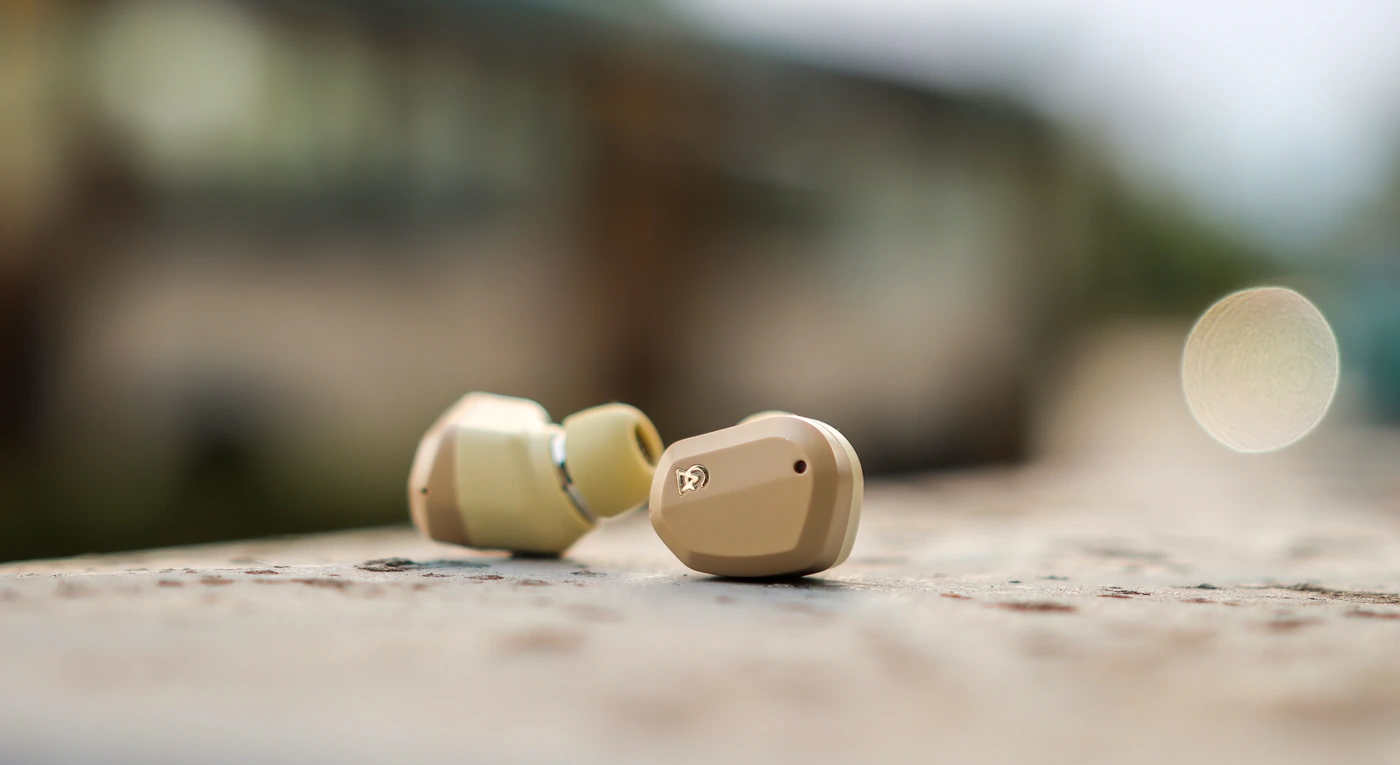
Dynamics / PRaT / Textures – Campfire Orbit is a fairly relaxed sounding IEM when it comes to textures, it doesn’t project or push too many textures or fatiguing elements onto the listener, and instead they allow you to simply lean back and enjoy all instruments, adding just the natural amount of texture to music, without being too extra. This means that they are not tuned for an analytical or overly detailed sound, but they will have the adequate texture for guitars to feel natural, voices to sound alive and bass isn’t just a moving mush of low-end, but can have texture when needed.
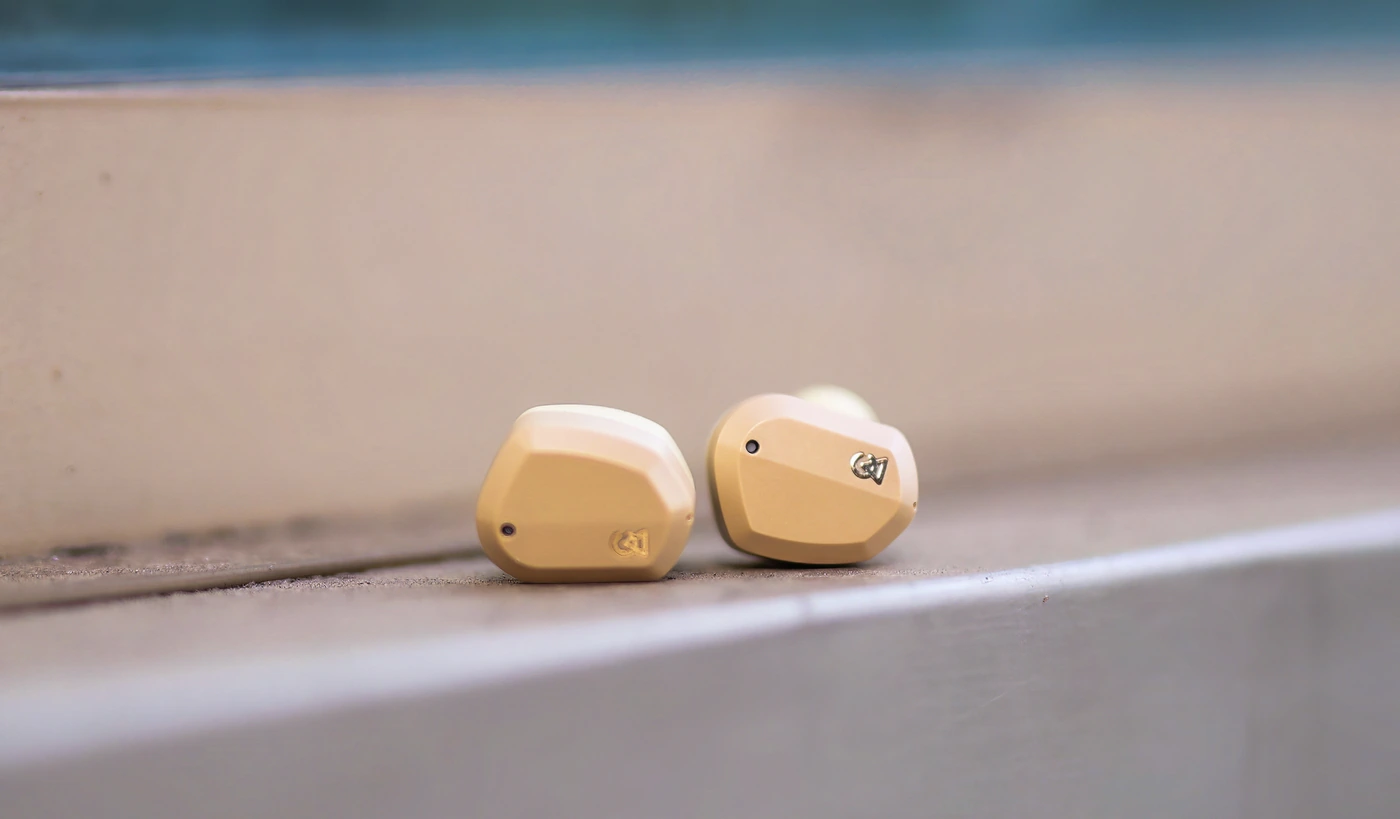
Soundstage – The soundstage of the Orbit is wide and dominated by the mid and upper bass, which creates a bloom, pushing those ranges and generally all music on the foreground layer, but allowing them to extend well in the width. Instrument separation is quite good, but the presentation makes the whole sound and song cohesive, without cutting each instrument out of the mix too much. Basically, they offer that fun and pleasing experience promised on the official product page.
Volume Control – With TWS IEMs, volume control will always be a complex subject, as they have the DAC, AMP, digital sound, and driver limitations to change the sound with the volume. Orbit sounds generally the same up to 75% of the volume, warm, relaxed, smooth and pleasing, but at the highest volumes, they become more forward and less relaxed sounding, although the THD increases and the whole sound can be a bit too loud.
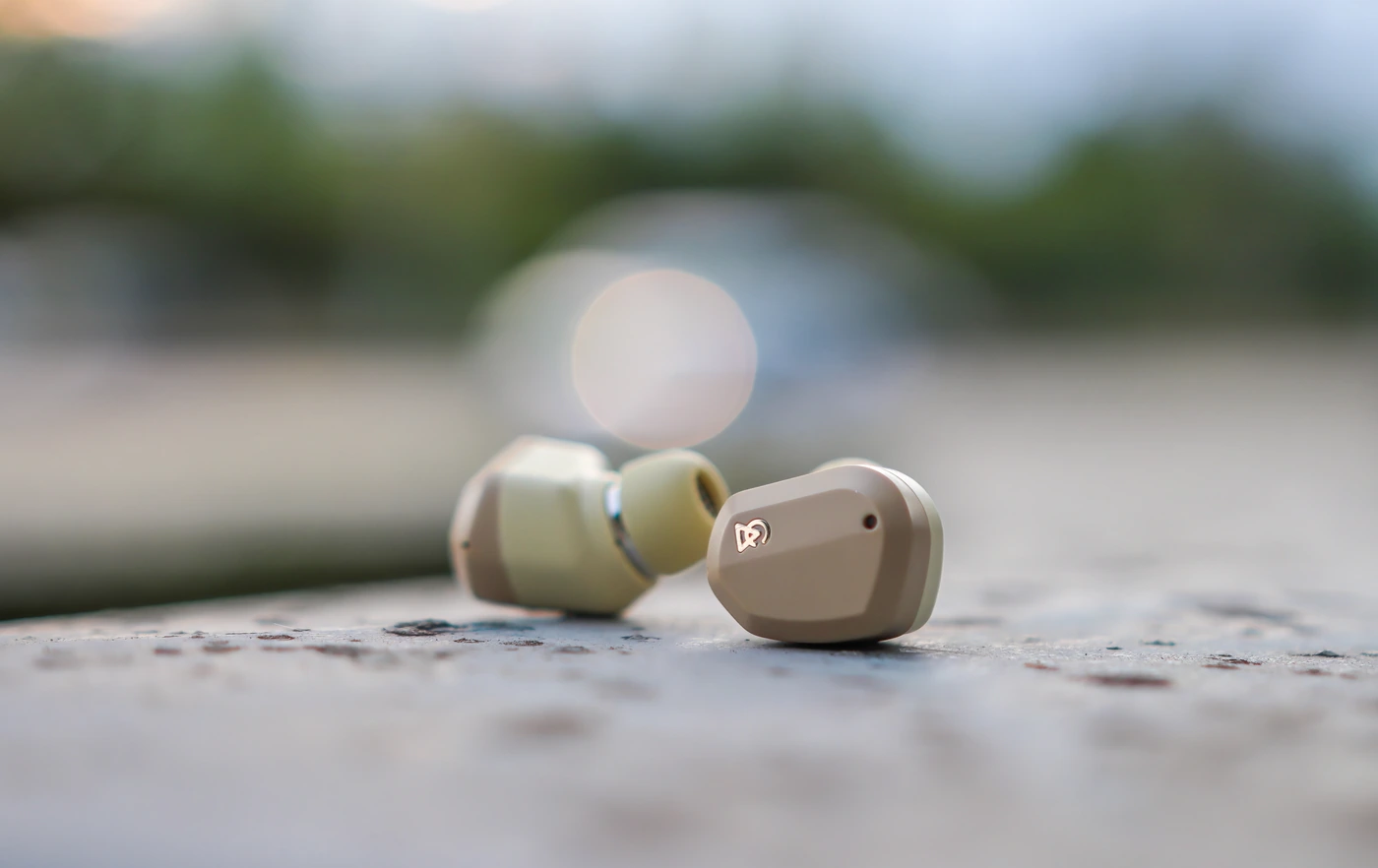
Treble – While I didn’t talk much about the treble of the Orbit so far, it is actually present and not entirely rolled off, just lower in energy and presence compared to the bass, and the midrange. There is a good amount of treble sparkle, and the top end extends up to around 18 kHz, with a natural speed, and non-fatiguing presentation that is pleasing to the ear. I never struggle to hear the top end, there is a good amount of air in the sound, but Orbit is generally a warm sounding IEM, so you can expect the treble to be tame and clean.
Comparisons
Campfire Orbit vs Grell TWS 1 (249 USD vs 199 USD)
Build – The case of Grell TWS1 feels better made and more solid than that of the Orbit, but the IEMS feel much heavier too, which makes the Orbit an instant favorite for their comfort and fitting. TWS 1 has ANC and one of the best implementations of ANC I’ve heard, which does not damage the sound, but the passive noise isolation of the Orbit is actually about the same as that of the TWS1 regardless of the ANC, but Orbit does leak quite a bit more. Touch control has the same quality for the two, and TWS1 has a good microphone just like the Orbit, so besides the comfort being better on the orbit, as they are both lighter and smaller physically, the two IEMs are mostly comparable.
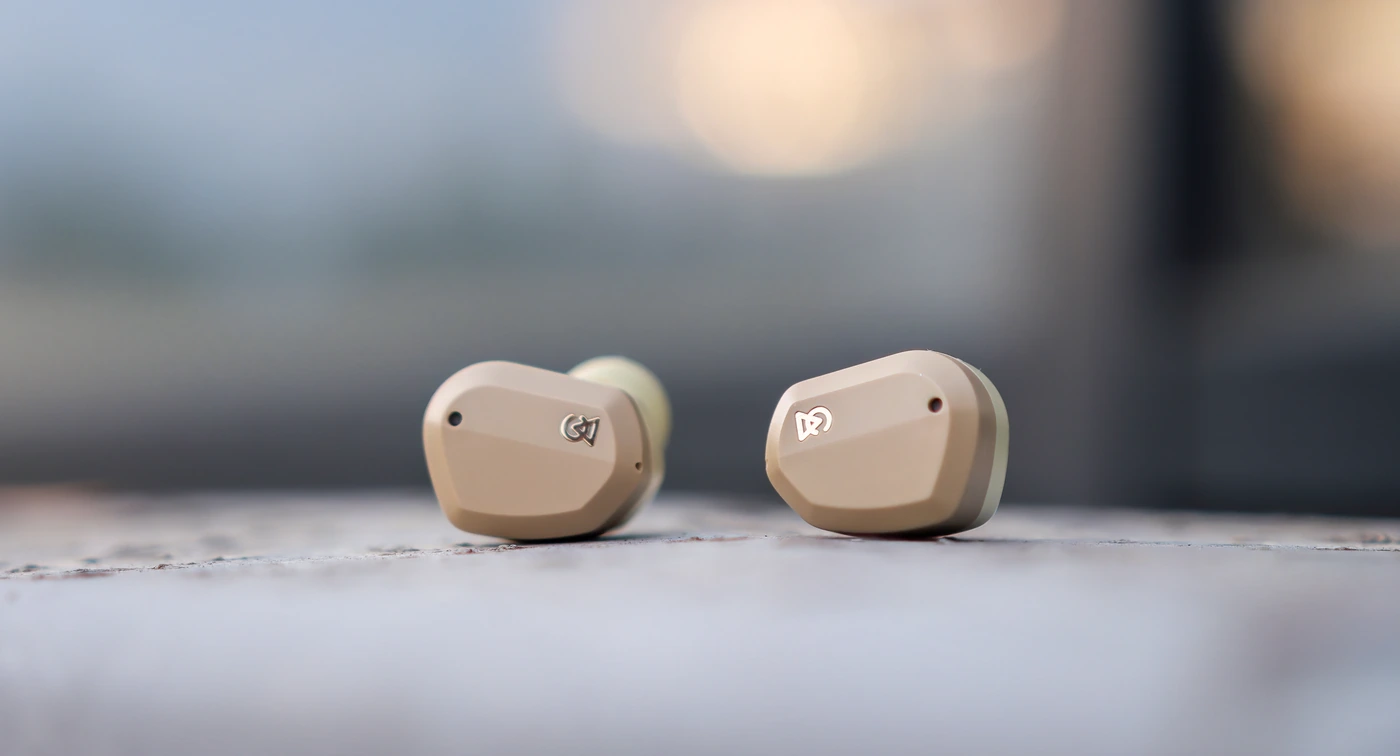
Sound – Sonically, Orbit is far warmer, bloomier, bassier and with a stronger bass presentation. Both the Orbit and TWS1 have a natural sounding midrange, clean voices and a juicy guitar presentation, but the treble of the TWS1 is more forward and you can more easily hear the cymbal crashes and shimmer in songs, while Bass and low-end substance / body of instruments is far more evident on the Orbit. Between the two, if you prefer a warmer sound with a laid back and relaxed, fun presentation, Orbit is made for you, while TWS1 offers a more analytical, V-Shaped listening experience.
Campfire Orbit vs HIFIMAN Svanar Wireless (249 USD vs 499 USD)
Build – Svanar Wireless has been my go-to gym IEM for almost half a year now, and the main reason I was able to make any gains at lifting weights, as having good sound is a big part of the gym experience for me. Svanar Wireless is not a perfect IEM though, and it is quite heavy, with the Orbit being lighter, and Orbit is less sensitive to mis-touching the shell for playing / pausing the song. The active noise canceling on the Svanar Wireless is a nice feature, but I keep it turned off all the time, both Orbit and Svanar Wireless having about the same passive noise isolation and leakage levels without ANC. If you do engage the ANC on the Svanar wireless, it offers much stronger passive noise isolation, but it affects the sonic quality.
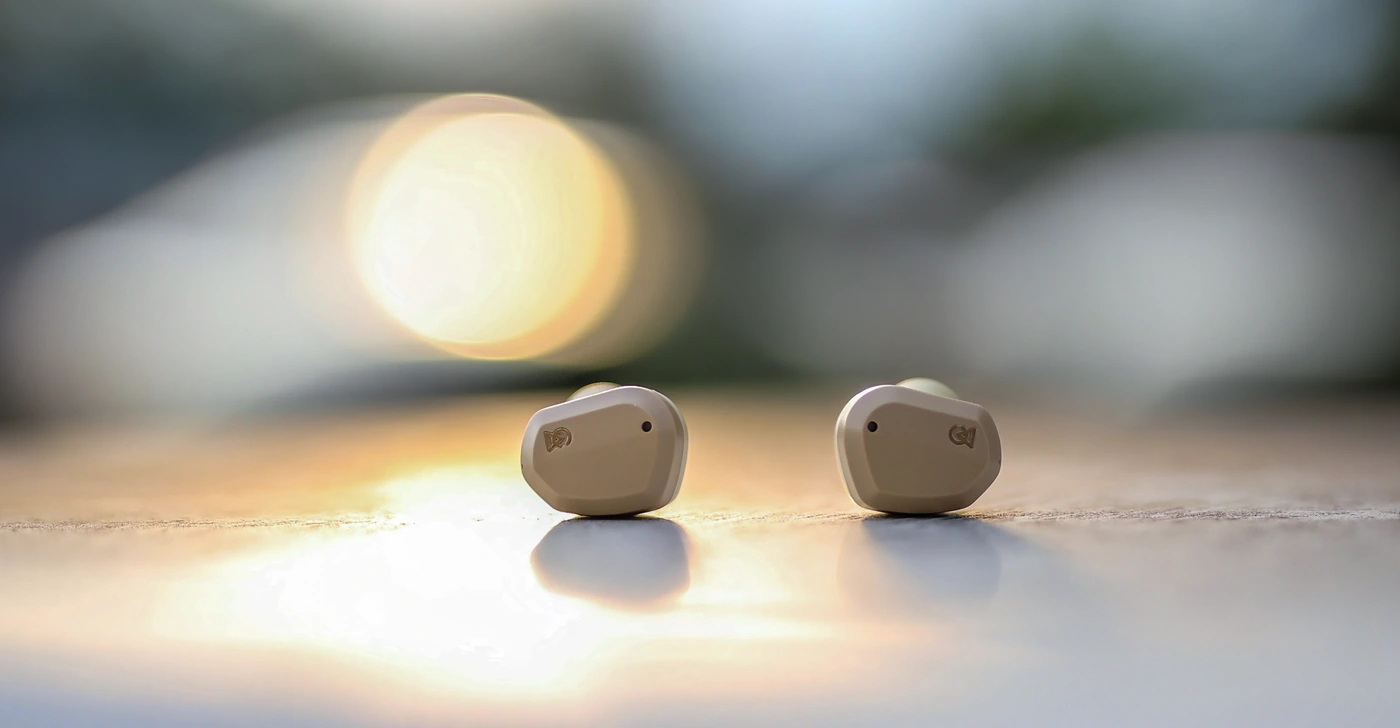
Sound – Sonically, Orbit is a much warmer, bassier and bloomier sounding IEM, with less focus on the analytical side and instead offering a more fun and laid back presentation. Svanar Wireless is razor-sharp, offers a strong technical edge, and sounds more V-Shaped, less warm, instead focusing on offering the highest resolution possible. If you seek details, Svanar Wireless has those, while if you seek a warmer, more laid back sound, Orbit offers that instead.
Campfire Orbit vs Astell&Kern AK UW100MK2 (249 USD vs 299 USD)
Build – Both Orbit and UW1000MKII are light, but Orbit is quite a bit smaller. This being said, the comfort is comparable, while UW100MKII has a shorter battery life and less extra charge time in the transport case. Passive noise isolation is a bit stronger on the Orbit, and leakage is about equal between them. Both have a good smartphone connection quality, and both are aesthetic, although the light brown color of the Orbit might be more pretty for most eyes than the light gray of UW100MKII.

Sound – Sonically, Orbit is quite a bit warmer, deeper and more powerful sounding, while UW100MKII sounds more mid centric, more natural, with less warmth and less bloom in the bass. If you generally want a sound that’s as natural as possible, UW100MKII will provide that, while Orbit provides a more fun presentation, with a more relaxed treble, more bass, more punch, more substance in music, and a wider soundstage, at the cost of the midrange and voices being brought more forward and closer to the listener, almost like surrounding the listener.
Value and Conclusion
Campfire Orbit offers an interesting alternative in the Bluetooth earphone world, as once you get to the better options, most of them are not basshead oriented, or warm and fun sounding, so it fills in a void left open by the constant search for detail and resolution. The good comfort, strong battery life, high maximum loudness and good support provided by Campfire all make the Orbit a high quality option for music lovers, although it is not your typical Campfire IEM, it delivers everything it promises to chase.

At the end of the day, if you’re looking for a high-quality True Wireless Bluetooth Earphone, with a fun, bloomy sound, with a natural tonality in the midrange, exceptional build quality, and modern / elegant design, Campfire Orbit is one of the best you can get, and has plenty of the detail and control for its price point, being a fully recommended purchase today on Audiophile-Heaven.
Product Link
You can grab one here – https://amzn.to/3WWmpCF
Technical Specifications

Frequency Response – 5Hz–20 kHz
Supported Codecs – AAC, SBC, AptX, AptX HD
Bluetooth 5.2 with Bluetooth LE Support
IXP5 Water Resistance Rating
Dual High-Quality Built-in Microphones
USB-C Wired Charging and Qi Compatible Wireless Charging Case
Orbit – 50mAh battery storage
Case – 270mAh battery storage
--- Please remember to stay safe, and always have fun while listening to music!---
- If you have a dime to spare, please donate, and help us! It would make the day brighter for me and my wife-
Full Playlist used for this review
We listened to more songs than those named in this playlist, but those are excellent for identifying a sonic signature. I recommend trying most of the songs from this playlist, especially if you’re searching for new music! The playlists are different for Spotify, Tidal and Youtube, and based on the songs I enjoy and are available on each!
https://www.youtube.com/playlist?list=PL_cjBXGmwSHSdGcwuc_bKbBDGHL4QvYBu
https://open.spotify.com/playlist/5J3oloz8Riy9LxEGenOjQ0?si=979ba4f082414be7
https://tidal.com/browse/playlist/330fd544-8e5b-4839-bd35-676b2edbb3d5
--- Contact Us ---





